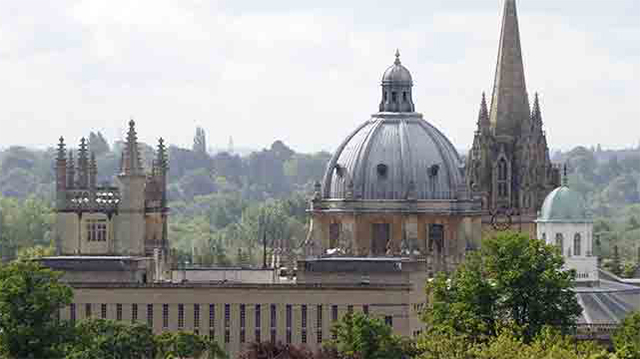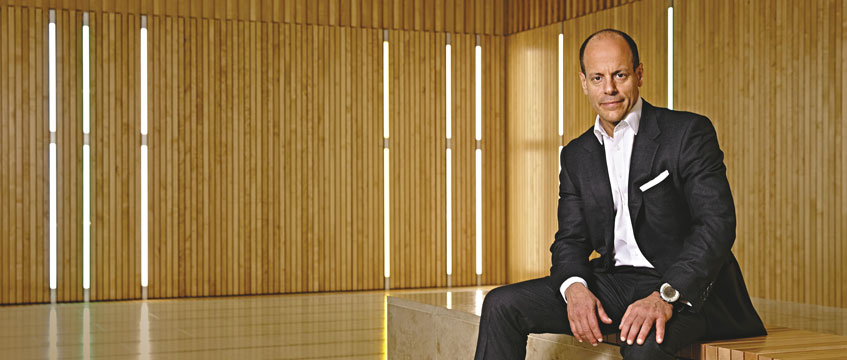Plans to redevelop a chunk of Exeter’s city centre have already encouraged a seriesof relocations and boosted take-up. Paul Strohm reports on the latest moves
Anticipation is mounting in Exeter’s business sector with the knowledge that Land Securities is planning to redevelop a large chunk of the city-centre around Princesshay and anchor the scheme with a department store. But the precise details are unknown and the planning application has been eagerly awaited since January.
Details revealed so far suggest that the joint venture with Exeter city council will redevelop 1.6ha (4 acres) to provide 37,160m2 (400,000 sq ft) including a 11,613m2 (125,000 sq ft) department store, 4,181m2 (45,000 sq ft) variety store, four large shops and 58 unit shops.
A number of relocations are already in progress in anticipation of the scheme, including London Camera Exchange, Rymans (see Transactions) and Portman Building Society, which is moving from Bedford Street to High Street.
Tom Jenkins of Chesterton says that LandsSecs’ scheme has highlighted the lack of alternative premises for affected businesses: “Premium bids for leases off the High Street are, once again, becoming the norm.”
So far, there has been little sign of disruption at other retail pitches. Demand for the High Street remains strong, according to Damian Cook of Stratton Creber. New occupiers include Virgin, Lakeland Plastics, Orange and Going Places.
Retailers will be disrupted, but there is little doubt among agents that the scheme is needed. “I believe the Princesshay scheme is crucial to Exeter’s re-establishment as the regional capital,” says Ralph Collison of Alder King, agent on the scheme.
Like many, Collison believes that the city needs to reassert itself and that the proposed South West Regional Development Agency should be located there. “It would be a big feather in Exeter’s cap,” he says.
“In the 1990s, financial services companies retrenched to Bristol if the opportunity arose. Now there are a few more regional offices being established in Exeter.”
Richard May of Knight Frank agrees that Exeter is the logical location. “Geographically it is the central place.”
Although the RDA office itself could be quite small – local guesses suggest as little as 929m2 (10,000 sq ft) – agents believe that it would attract other significant relocations.
The timing would also be helpful. After many years where demand for offices has been indifferent, the market has seen a resurgence that has reduced stock and pressured rents.
Take-up was 18,580m2 (200,000 sq ft) last year against a three-year average of 16,258m2 (175,000 sq ft), according to Andrew Pearce of King Sturge & Co.
A large proportion of this came from out of town, in particular Exeter Business Park, Abbey Court and Pynes Hill. Significant deals include the Environment Agency taking 2,044m2 (22,000 sq ft) at Exminster House on Exeter’s outskirts at £81 per m2 (£7.50 per sq ft).
Pearce says that available prime stock out of town amounts to 7,432m2 (80,000 sq ft) and predicts that this will have gone by the end of the year. However, Weslyan & General Insurance is planning to vacate 6,317m2 (68,000 sq ft) at Pynes Hill next year and the space is already on the market.
Lack of choice combined with several comparatively large enquiries means that prelets are in prospect. Pearce reckons discussions could generate 3,252m2 (35,000 sq ft) of development. Local rumour suggests serviced space operator Regus and a government department are among the more serious enquiries.
There is also interest from call centre operators. Among those considering the city are believed to be the Post Office, with a requirement for 3,252m2 (35,000 sq ft) in either Plymouth or Exeter.
Pearce says that the scarcity of better-quality space is driving up rents – which are about £108 (£10 per sq ft) out of town. Prelets will be at £118-£129 per m2 (£11-£12 per sq ft).
In the city, rents are £81-£108 per m2 (£7.50-£10 per sq ft), according to Richard May of Knight Frank. He says that £97 per m2 (£9 per sq ft) for prime space is not unusual.
With supply and demand almost back in equilibrium, and rents on the increase, hopes of speculative development seem more realistic. “The Exeter market has been typical of many South West towns, with no speculative office development in the last year,” says Scott Rossitter of Alder King.
“Developers are very reticent to put a spade in the ground without having a good covenant secured.”
Summerfield Developments is likely to be among the first. It has plans to develop 3.6ha (9 acres) at Pynes Hill, to be known as Woodwater Park. Infrastructure work begins in October and development should begin next year.
But over-supply remains in the city centre, says Pearce, although figures are encouraging. Only approximately 11,613m2 (125,000 sq ft) is prime space while annual take-up averages6,968-9,290m2 (75,000-100,000 sq ft).
Meanwhile, investment deals amounting to some £50m have taken place over the past few months.
MMI sold part of Manor Court on Dix’s Field to Standard Life for about £2.3m, while Sterling House, also in Dix’s Field, was bought by Liverpool Victoria for just over £5m, says Jonathan Burtt of Chesterton.
The most significant deal was Dawnay Day’s acquisition of National Mutual’s interest in the 11,705m2 (126,000 sq ft) Southernhay Gardens – a complex of 13 buildings bought for about £14m.
May of Knight Frank, which is joint agent on the scheme with King Sturge & Co, says: “Dawnay Day wants more upbeat management and has some interesting ideas. A relaunch is expected within the next month or two.”
|
Activity drives industrial expansion The past 12 to 18 months have seen plenty of activity on Exeter’s main industrial estates, according to King Sturge’s Tim Western. A year ago there were four buildings of more than 4,645m2 (50,000 sq ft) available near Exeter – three in the Sowton area and one at Marsh Barton. After lettings to Devon county council, local sportswear manufacturer Pen Carrie and dried flower specialist Flower Barrow, only one remains – Dart Building at Interchange West. The 6,317m2 (68,000 sq ft) building is Salmon Harvester’s development, adjacent to Exeter Business Park and the M5. “The Exeter market has been somewhat sheltered from the major economic factors such as the strong pound and the rise in interest rates, as the majority of industries in the local market are either service-sector orientated, rely strongly on the local trade market, are importers, or hold distribution contracts for the South West,” explains Rossitter. Traditional manufacturing Just four individual plots remain at Sowton, although Bardon Aggregate’s 8.5ha (21 acres) is now under offer to a major contractor, believed to be Laing. The city’s older industrial area, Marsh Barton, has seen a gradual shift away from traditional manufacturing and distribution towards trade-counter operations and, apparently, the largest concentration of car dealerships in Europe – more than 30 if the adjacent Matford Park is included. “It is now possible to purchase any car from a Sanyong to a Ferrari on Marsh Barton,” comments Rossitter. Carland, a secondhand car dealership, is considering Matford for a purpose-built 9,290m2 (100,000 sq ft) facility. The development, by local company Rockeagle, extends to Marsh Barton and has 7.3ha (18 acres) in the first phase and 16.2ha (40 acres) allocated for the second. A number of companies have already relocated there, including Hardinge Machine Tools, Kastners Volvo and Double Glazing Supplies. Rossitter says that he has a list of 40 companies discussing design-and-build opportunities at Matford. |
|
Transactions 176 Fore Street: Retail. Rymans has taken an assignment of Epwin Group’s lease. The rent reflects a zone A rent of £377-£431 per m2 (£35-£40 per sq ft). Alder King acted for Ryman. 174 Fore Street: Retail. London Camera Exchange has taken a new 15-year lease with a break at year 10 and a zone A rent of £377-£431 per m2 (£35-£40 per sq ft). Alder King acted for the tenant. Osmond Tricks represented the landlord, a private family trust. Unit A, 20 Trusham Road: Industrial. Brandon Hire has taken 514m2 (5531 sq ft) at £59 per m2 (£5.50 per sq ft). Alder King acted for Brandon Hire, while the Exeter office acted for the landlord, industrial hardware merchant Parkins. |
|
Council gets in on the act Exeter’s leisure opportunities have been relatively under-exploited – something the city council, among others, wants to rectify. Since the Environment Secretary rejected the leisure elements of two retail and leisure proposals for theout-of-town Digby Hospital site three years ago, attention has refocused on the city centre, with two prospective large leisure schemes. While HBG Properties awaits the outcome of an inquiry into its proposals for a mixed scheme on land next to Exeter’s Central railway station, the findings of a Deloitte & Touche report on commercial leisure have just been released. Commissioned by the city council, the report concludes that existing leisure provision is fragmented and should be clustered, with a multiplex cinema or nightclubs as the anchor for a family entertainment centre. The city council believes that the only site large enough to accommodate such a scheme is its 3.1ha (7.6 acre) bus station site. MFI, which has a site adjacent, is planning to relocate in anticipation, and is believed to have done a deal to move close to Sainsbury’s Homebase at Sowton. Major towns The report also concludes that there are ample pubs in the city, but too many aimed at younger age groups. However, according to Rob Williams of Healey & Baker: “Exeter is one of the few major towns in the South West not to have an A3 circuit encompassing some of the more common operators, including Yates, Bass, Whitbread and so on.” (See Overview, p70.) JD Wetherspoon has a unit out of town and Regent Inns recently opened on Fore Street. |
Exeter










